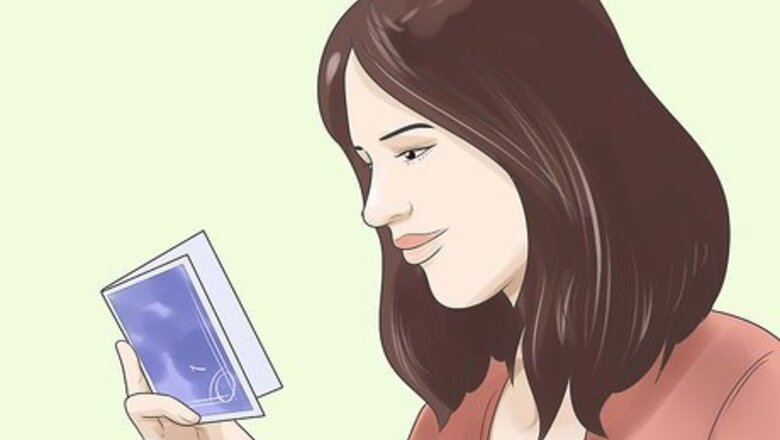
views
Understanding Black Tie

Read the invitation closely. There are subtle difference between “black tie optional,” “black tie preferred,” and “black tie.” Knowing the time of day and the time of year for the event, as well as what kind of event it is, can help you determine how to dress best. Evening events are more formal than daytime events. Winter events are often more formal, and dark colors are more appropriate, than summer events. If the invitation isn't clear, ask the person who's having the party what type of attire is expected.
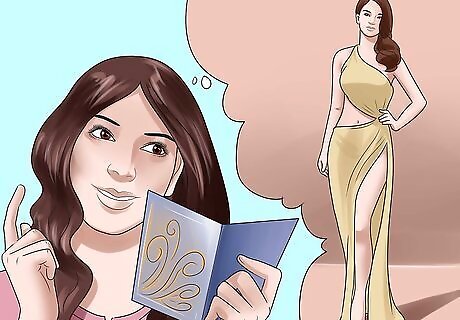
Understand “black tie preferred.” If the invitation says that black tie attire is preferred, it means that you should wear the nicest clothing you have easy access to. If you don’t have a tuxedo or a floor-length gown, a nice cocktail dress or a suit may be acceptable. If you choose not to wear black tie to an event that is deemed black tie preferred, you should do it with confidence and accept the fact that most people will be wearing black tie attire.
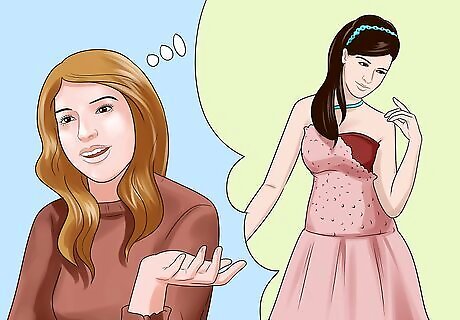
Understand “black tie optional.” Like preferred, optional suggests that the event is formal, but you have a bit more flexibility about what you choose to wear. At a black tie optional event, the crowd will most likely be split in half between black tie and a very formal style of dress. If you still can’t decide what to wear and you know other people who are attending the event, ask them what they will be wearing. This may give you a leg up on what exactly to wear, especially if you can ask the host of the event.
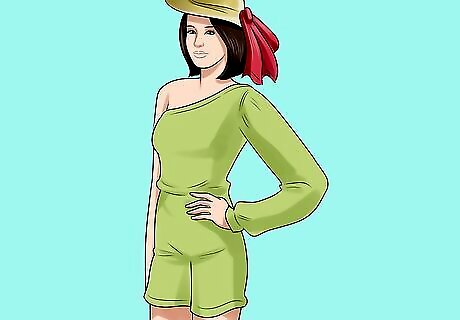
Understand “black tie creative.” This suggests that the event is formal, but that you are allowed to be a little more flexible about your clothing choices. Black tie creative means that men can switch out their white tux shirts for a black shirts or wear a red tie to add flair to their outfit. Ladies can be a bit flashier in their choice of gown colors, and maybe even go as far as to wear a tiara or long gloves.
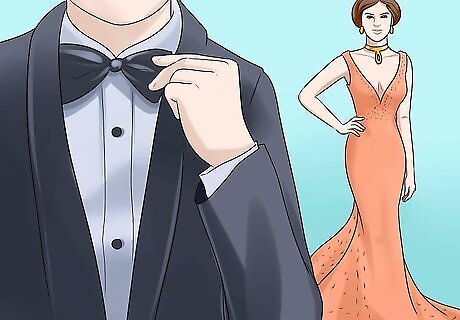
Be aware of “black tie mandatory.” This means that you will not be allowed to enter the event unless you are dressed in appropriate black tie attire. The steps below will direct you towards dressing appropriately and ensure that you will be allowed to enter the event.
Wearing Appropriate Menswear
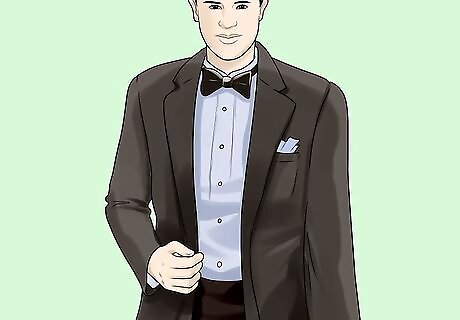
Wear an appropriate tuxedo. A tuxedo is usually made of black wool, and includes, first, a jacket and matching pants. The jacket can be single or double-breasted, but the most traditional style is single-breasted with only one button. The pockets on the jacket should not have flaps over them. If they do, tuck the flaps into the pockets. The pants should match the color and material of the jacket, should not have cuffs, and should have a stripe on the outside that matches the lapel of the jacket. Midnight blue is a tasteful alternative to the standard black tuxedo, as it can appear to be blacker than black in evening lighting. An off-white or ivory dinner jacket is another tasteful alternative in you're in warmer weather.
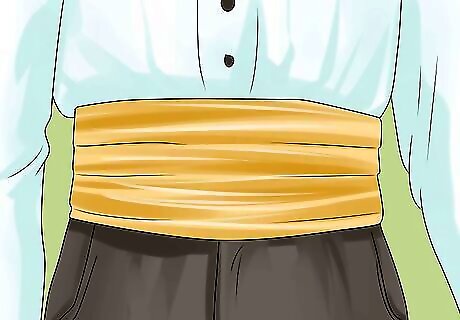
Select appropriate accent pieces. In addition to your tuxedo jacket and pants, you will need a white shirt and a waist covering. Traditional waist coverings call for a cummerbund or low cut waistcoat, another word for a formal evening vest. It is important to know, if you opt for a waistcoat, it must be low cut, otherwise you hide the bosom of your shirt. The cummerbund should be black, however maroon is a tasteful alternative. Black, white, or burgundy are classic color options for your waistcoat.
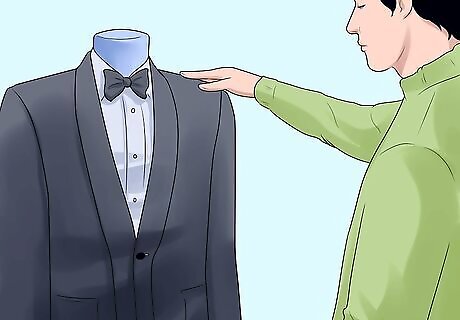
Rent a tuxedo. If you do not own a tuxedo, you can rent one from a wedding or prom shop. Many shops offer tuxedos for reasonable rates. The shop employees will likely not know much about proper Black Tie, and might try to steer you toward what is the new fashion, or what is trendy. Be aware of this, and know what is and is not appropriate for Black Tie.
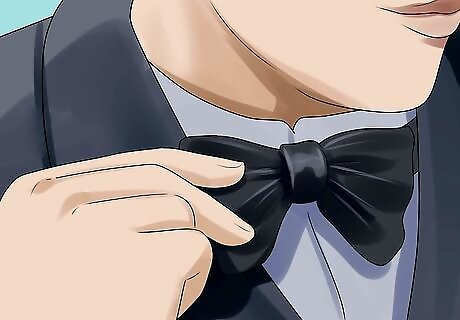
Wear a black bow tie. Official black tie events call for black bow ties. If the event was billed as black tie optional, preferred, or creative, you may be able to get away with another color bow tie, but traditionally you’ll still be limited to your standard black. Never wear a bow tie that matches your date's dress, unless her dress is black. Instead, tell her that you would like to have her shine, rather than have you draw negative attention.
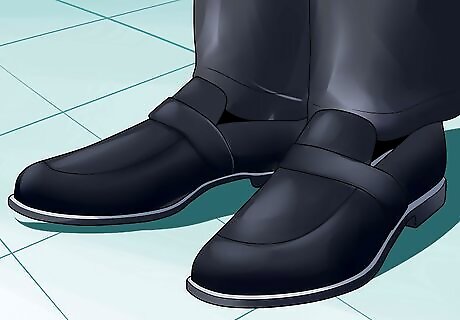
Complete your look with black, shined dress shoes. Your shoes should have been shined recently, and they should not appear to be dirty or scuffed. You may need to rent shoes if you do not have appropriate shoes.
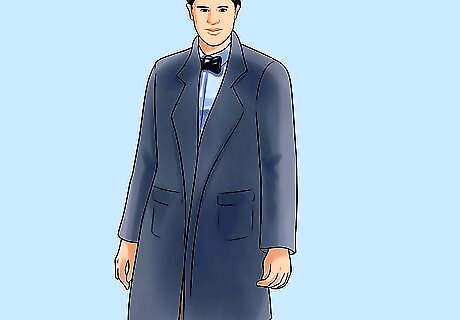
Be prepared for the weather. Fortunately, many black tie events take place at night and in the winter. You will likely be comfortable in your attire with no overcoat. If you do need a coat, a dark dressy coat such as a chesterfield coat is appropriate, and a white dress scarf is traditional. In warm weather, be prepared by choosing a lighter fabric tuxedo if possible and carrying a handkerchief to discreetly remove sweat if necessary.
Dressing for Black Tie as a Woman
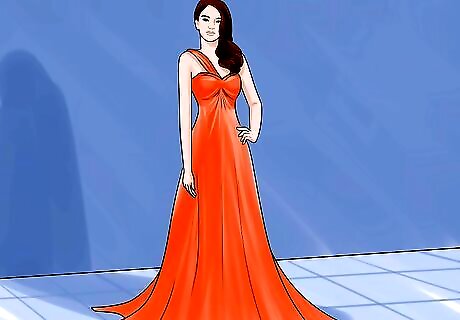
Select a floor length gown to wear. Floor length gowns are more elegant than short dresses, making them a perfect option for a black tie event. The neckline should be tasteful, but the sleeve length (if the dress has sleeves) is optional. Many full-length formal gowns are sleeveless. In the absence of a full floor-length dress, a very nice, dark colored or black three-quarters length dress may be acceptable. Older women should always choose a longer gown, but younger women may be able to wear a shorter gown appropriately. The most formal events call for a long ballgown with a full skirt.
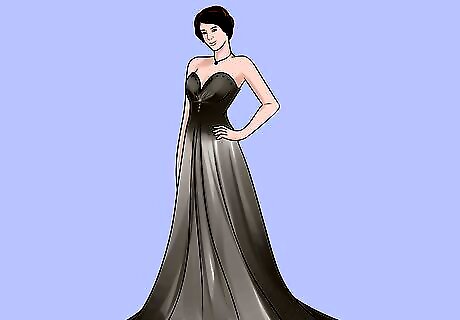
Choose a dark, elegant color for your dress. Black is usually preferred, with a rich texture that adds some visual interest. Deep colors like blue, maroon, a rich purple, and brown also look nice. White or red dresses can be formal and classy, but may make you stand out. Use caution when wearing these to events like weddings, at which the bride should stand out, not one of the guests.
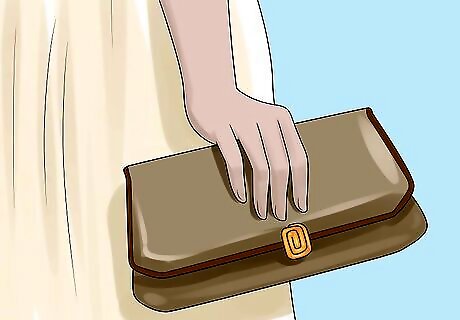
Carry a nice purse or clutch. Put your regular day purse aside and opt for a satin, or beaded, smaller clutch or purse for a black tie event.
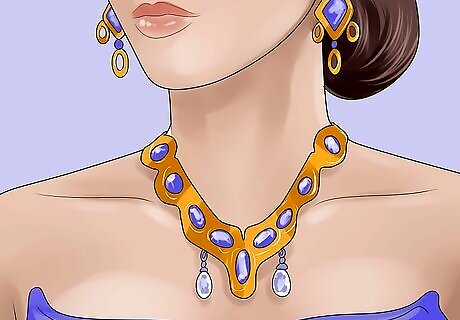
Put on your best jewelry. The more sparkle, the better. This is a time for you to shine. Wear real jewelry (for example, real diamonds, pearls, or gold) whenever possible. Costume jewelry should look very real and not tacky if worn. Traditional jewelry recommendations are a sparkly bracelet and earrings or very simple, understated necklace.
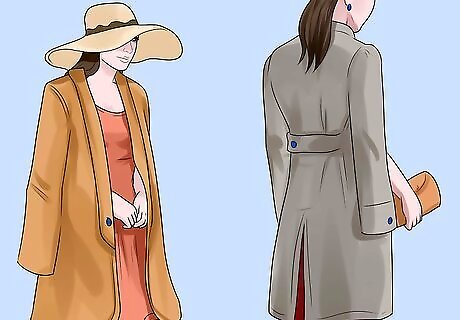
Plan for the weather. It can be difficult to wear evening wear in the winter months, as it is often chilly and women’s black tie attire rarely has sleeves to speak of. Your cold-weather options, however, should also be formal. Remember that you may be able to shop at a thrift store or borrow items instead of buying them new. A fur or faux fur coat or wrap is the preferred choice for black tie dress codes. A traditional overcoat is the second best choice. For milder climates or for time spent indoors, a shawl or wrap made from a quality material such as cashmere is preferred. Long gloves, while made for style rather than warmth, may help ward off the cold and will give you a fancy flair.
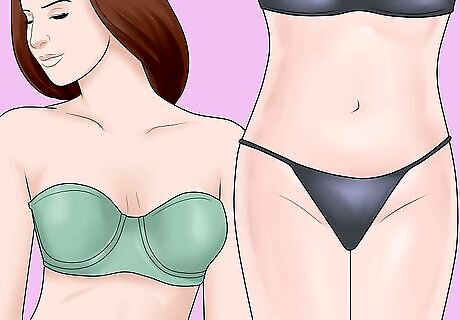
Conceal your undergarments. None of your undergarments should be visible in any way while dressed in your evening wear. Check for bra straps. Most formal dresses will require a strapless bra. Be sure there are no panty lines. If your dress is curve-hugging or tight, you need to be sure that no one will be able to see your underwear. You may need to wear a thong or go without. Consider wearing slimming undergarments. There are undergarments that are meant to smooth out areas of your body that may be bumpy and help give you a flattering shape. These usually do not show any lines beneath the clothing.
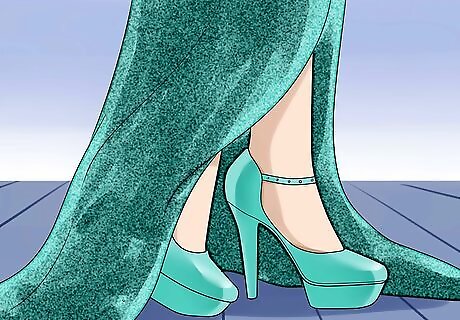
Complete your black tie attire with evening shoes. Evening shoes are usually dainty or strappy, with a decent heel. Large or clunky shoes do not generally look good with formal dresses. Evening shoes that are satin, beaded or shiny are great choices. Ideally, the texture and color of your shoes should match that of your handbag/clutch.
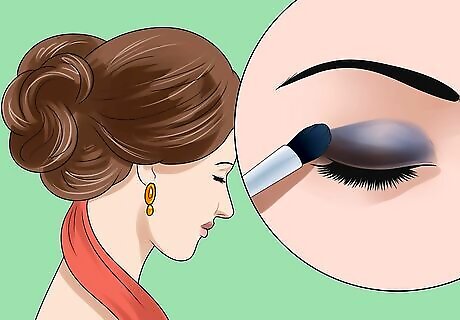
Style your hair and makeup. You should spend extra time making your hair and makeup look nice for a black tie event. Traditional black tie formality calls for hair to be gathered in an up-do. Consider going to a salon to have a professional style your hair for you. Events that involve dancing often have more flexibility and encourage flowing hair. Arrange for a manicure and pedicure the day of the event. Make a reservation ahead of time to ensure that they will have room for you. Makeup should be applied well and not over-done. If you are inexperienced in makeup application, schedule a makeover at a salon or go to a makeup counter at a department store.


















Comments
0 comment